So, you’ve explored the different Types of Treadmills Explained and you’re ready to compare specific models.
But now you’re faced with a wall of technical jargon: CHP, deck size, weight capacity, cushioning tech, endless programs… it’s easy to feel lost!
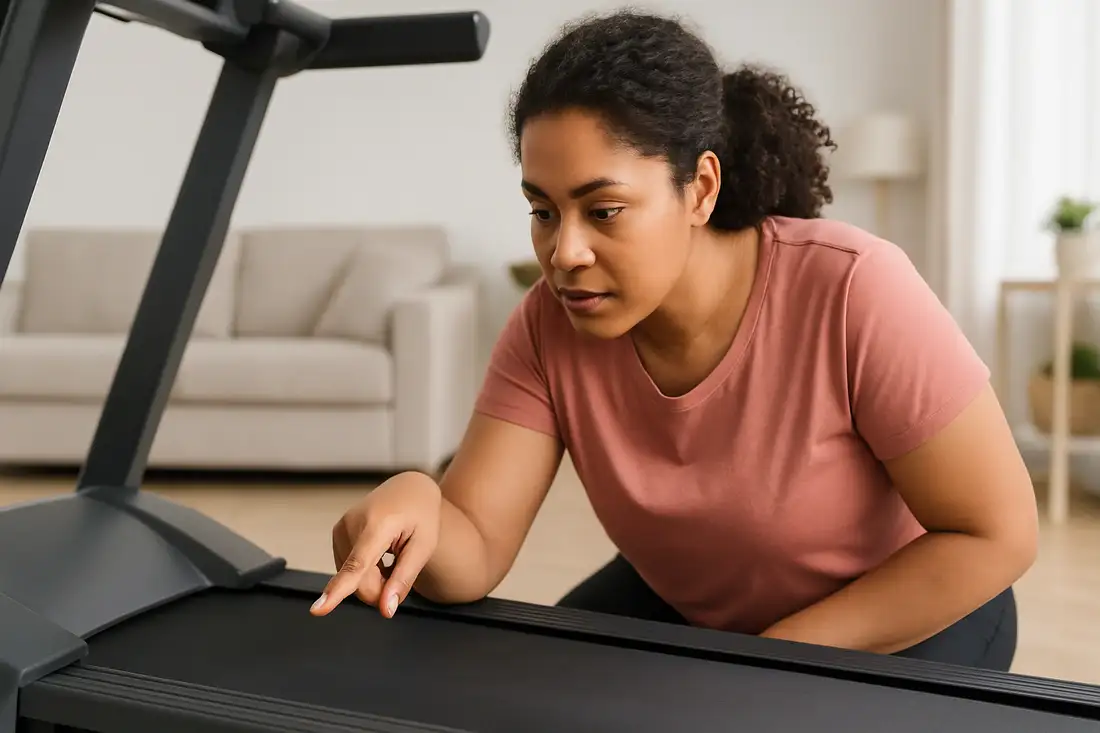
Wondering which specs actually matter for your first machine?
You’re in the right place! This guide cuts through the marketing noise to focus only on the key treadmill features beginners truly need to prioritize.
We’ll decode the tech speak, explain why these features impact your safety, comfort, and results, and provide simple guidelines. We’ll also touch on practicalities like assembly.
Let’s make choosing your first treadmill less confusing and more confident!
Why Do These Features Even Matter for a Beginner?
Understanding a few core features before buying is crucial.
Getting them right helps ensure you:
- Choose a treadmill that’s safe, stable, and physically fits both you and your space.
- Have a smooth, comfortable, and enjoyable workout experience from day one.
- Invest in a machine built to last and support your initial fitness goals (walking, jogging).
- Avoid overspending on features that sound impressive but aren’t essential for starting out.
- Have peace of mind regarding your investment (Warranty!).
Focusing on these essentials sets you up for success.
The “Must-Have” Foundation – Non-Negotiable Features for a Good Start
Think of these as the absolute pillars of a suitable beginner treadmill.
They directly impact safety, basic function, comfort, and whether the machine is appropriate for you and your home.
Don’t skimp here!
1. Motor Power (CHP Explained Simply)
- What it is: Look for Continuous Horsepower (CHP). This measures the sustained power the motor delivers during use. (Ignore vague “Peak HP” ratings).
- Why it Matters for Beginners: Ensures the belt runs smoothly without lagging or straining under your weight, preventing jerky movements and ensuring motor longevity. Crucial for a good feel, especially during speed changes.
- Beginner Guideline:
- Primarily Walking: Aim for 1.75 – 2.5 CHP.
- Planning Jogging/Light Running: Look for 2.5 – 3.0+ CHP.
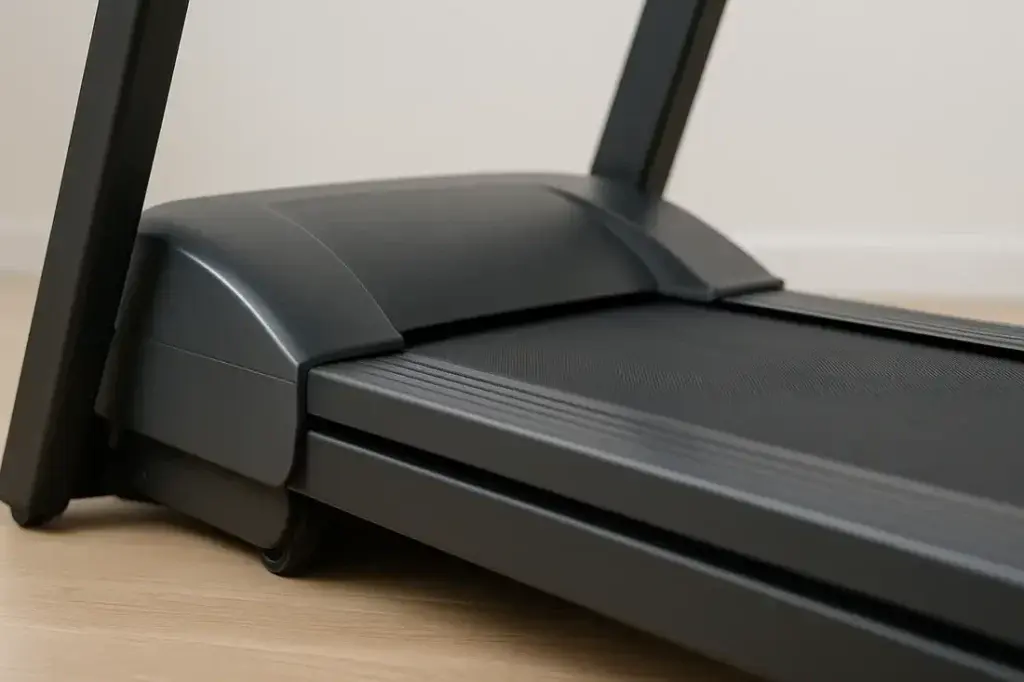
2. Maximum User Weight Capacity
- What it is: The maximum weight the treadmill is designed and tested to safely support.
- Why it Matters for Beginners: Absolutely critical for safety and durability. Exceeding the limit stresses the motor, frame, and belt, leading to premature wear, potential failure, and voiding the warranty.
- Beginner Guideline: Choose a treadmill with a weight capacity that is at least 20-50 lbs (approx. 10-23 kg) higher than your actual body weight. This provides a crucial safety margin and accounts for the increased force during movement.

3. Running Surface / Belt Size
- What it is: The physical dimensions (Width x Length) of the moving belt you exercise on.
- Why it Matters for Beginners: Essential for safety and feeling confident. A belt that’s too short or narrow feels restrictive and increases the risk of misstepping. Adequate space allows for a natural stride.
- Beginner Guideline:
- Primarily Walking: Minimum 18″ W x 50″ L.
- Jogging/Running: Minimum 20″ W x 55″ L (Consider 60″ L if taller).
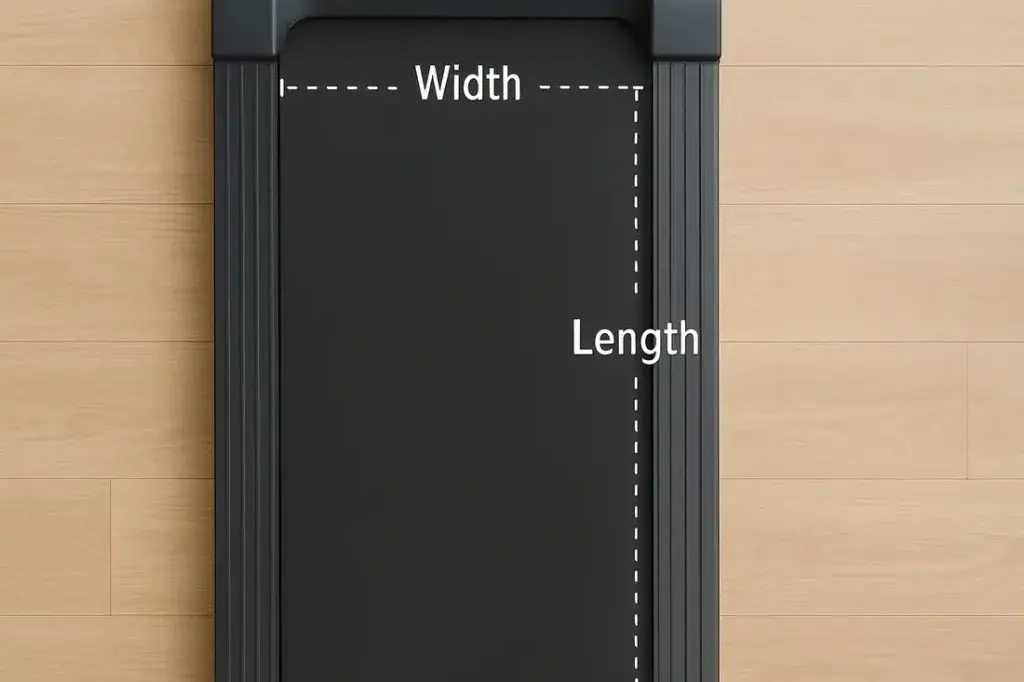
4. Overall Dimensions & Footprint
- What it is: The total space the treadmill occupies when fully assembled (Length x Width x Height). This is different from just the belt size!
- Why it Matters for Beginners: It needs to physically fit in your designated workout area! You also need adequate clearance around it, especially behind (check manufacturer specs, often 3-6 feet).
- Beginner Guideline: Measure your space carefully before buying. Compare it to the treadmill’s assembled dimensions listed by the manufacturer. Don’t forget ceiling height if incline is a factor.
5. Deck Cushioning (Your Joints’ Best Friend!)
- What it is: The shock absorption system under the belt designed to reduce impact.
- Why it Matters for Beginners: Makes workouts far more comfortable, reduces stress on joints (ankles, knees, hips), and helps prevent injuries, allowing you to be more consistent.
- Beginner Guideline: Look for mentions of cushioning in specs and reviews. Most reputable brands offer decent systems. Better cushioning is often found on slightly higher-priced models.
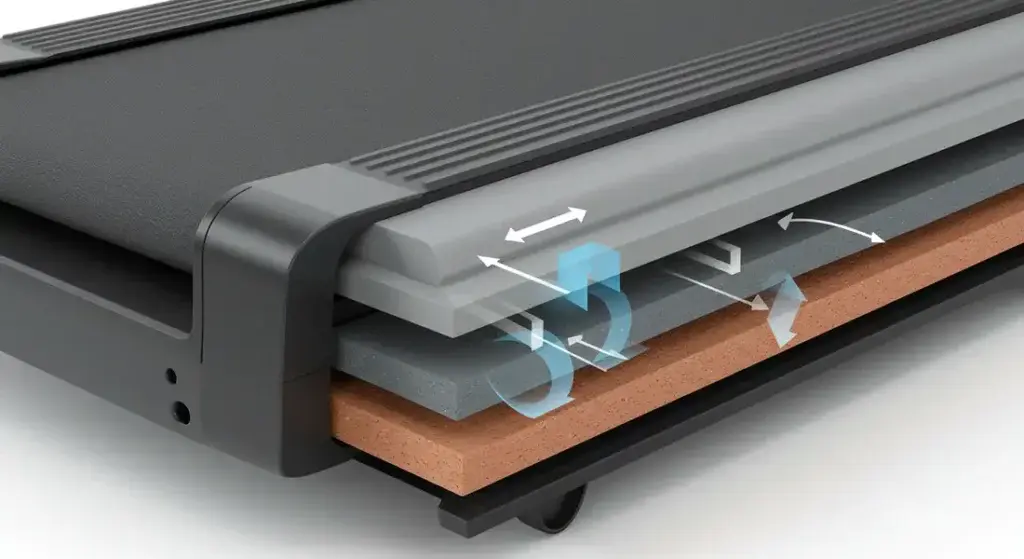
6. Basic Safety Features (Non-Negotiable!)
- What they are: The Safety Key/Clip system and an easily accessible Stop Button.
- Why they Matter for Beginners: Your primary protection against falls or emergencies.
- Beginner Guideline: Ensure any model considered has both features, fully functional and easy to use.
The “Good-to-Have” Enhancements – Features That Add Value & Longevity
Once the foundational elements are covered, these features enhance the workout experience, offer variety, and provide peace of mind about your purchase.
7. Speed & Incline Range
- What they are: The treadmill’s top speed and highest deck tilt percentage.
- Why they Matter for Beginners: Allow for workout progression and variety as fitness improves.
- Beginner Guideline: Ranges of up to 10-12 mph speed and 10-15% incline are typically more than sufficient for beginners and intermediates.
8. Console Display & Basic Readouts
- What it is: The screen showing workout metrics.
- Why it Matters for Beginners: Essential for tracking progress (Time, Distance, Speed, Calories) and staying motivated.
- Beginner Guideline: Prioritize clarity and ease of reading. A simple, backlit LCD is often perfectly adequate.
9. Pre-set Workout Programs (The Basics)
- What they are: Built-in routines that automate speed/incline adjustments.
- Why they Matter for Beginners: Add variety, guidance, and motivation; prevent boredom.
- Beginner Guideline: A handful (5-15) of useful basic programs (hills, intervals) is valuable. Quality over quantity.
10. Warranty (Peace of Mind!)
- What it is: The manufacturer’s guarantee covering potential defects or failures for a set period. Usually covers Frame, Motor, Parts, and Labor separately.
- Why it Matters for Beginners: A treadmill is a significant investment. A good warranty protects you financially and often indicates the manufacturer’s confidence in their product quality. Longer warranties (especially on frame and motor) are generally better.
- Beginner Guideline: Look for at least 10+ years on the frame, 1-5+ years on the motor, and 1-2 years on parts and labor for decent mid-range models. Compare warranties between brands.
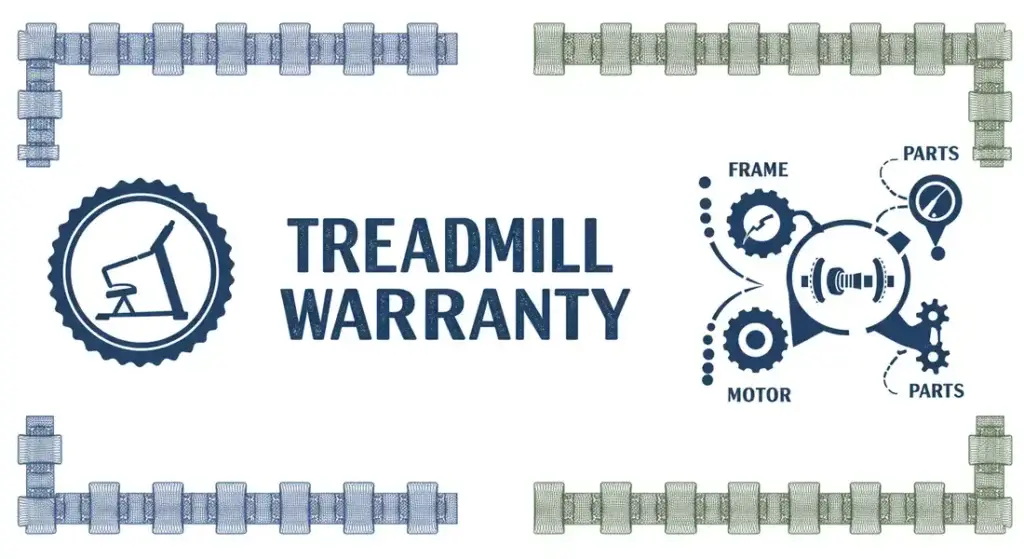
The “Don’t Stress It (Yet)” Features – Nice, But Not Essential for Starters
Avoid getting distracted or overspending on these features when choosing your first treadmill.
Focus your budget on the core mechanics and build quality first.
Fancy Touchscreens & Built-in Entertainment
Use your own tablet/phone instead.
Advanced App Connectivity & Subscription Services
Start effectively without costly integrated platforms.
Extreme Speed/Incline Ranges
Likely unnecessary for beginner goals.
Heart Rate Monitoring (Handlebar Grips)
Often inaccurate; use a chest strap later if needed.
Other Practical Considerations for Beginners
Beyond performance specs, keep these practical points in mind:
Assembly
Most treadmills require significant assembly.
Check reviews for difficulty or consider paying for professional assembly if offered (often worth it!).
Noise Level
All treadmills make noise. Quality motorized ones are often quieter during operation, but footfalls always contribute.
Check user reviews for insights, especially if noise is a concern (apartments, shared spaces).
Folding Mechanism (for Folding Models)
If choosing a folder, check reviews on the ease of use and, more importantly, the security of the locking mechanism when folded and unfolded.
Is it gas-assisted for easier lifting/lowering?
Quick Feature Checklist – Matching Specs to Your Primary Use
Let’s summarize recommendations based on activity:
If Primarily WALKING
- Must-Haves: Motor (1.75+ CHP), Weight Capacity (Safety Margin!), Belt (18×50+), Footprint (Fits Space!), Cushioning, Safety Features.
- Good-to-Haves: Warranty, Basic Speed/Incline, Clear Console. Programs are a bonus.
If Planning to JOG or RUN Regularly
- Must-Haves: Motor (2.5+ CHP), Weight Capacity (Safety Margin!), Belt (20×55+, 60″L ideal), Footprint (Fits Space!), Excellent Cushioning, Safety Features.
- Good-to-Haves: Longer Warranty (esp. motor), Wider Speed/Incline Range, Clear Console, Useful Programs (Intervals/Hills).
Conclusion
Choosing your first treadmill feels less daunting when you know which features truly count!
Focus intently on the foundational “Must-Haves”: a suitable Motor (CHP), adequate Weight Capacity, the right Belt Size and Overall Dimensions for you and your space, effective Cushioning, and essential Safety Features.
Then, consider valuable additions like a solid Warranty and useful basic programs.
Don’t get sidetracked by flashy extras that inflate the cost without adding essential value for a beginner.
Invest wisely in a quality machine that meets your current needs comfortably and safely. You’re building a foundation for a healthier lifestyle!
Ready to take the next step?
Ensure you know how to operate your chosen machine safely: Review our guide on How to Use a Treadmill Safely.
Looking for beginner-friendly routines? Check out these Simple Treadmill Workouts for Beginners.
Want to see how these features stack up in real treadmills? Explore our Treadmill Reviews Category Page.
